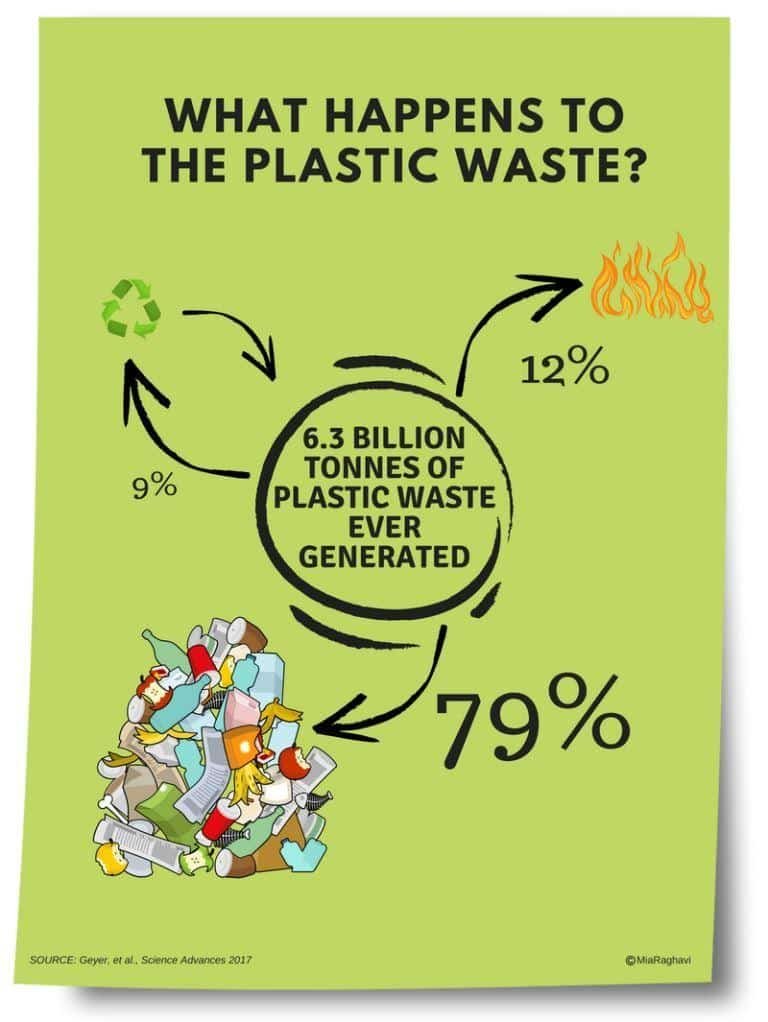We are pleased to present our next Master Divers Life contest blog by contestant Mia Raghavi
Only 9% of our world’s plastic waste has ever been recycled!
Over a hundred years ago came one of humanity’s greatest inventions – synthetic plastic. In today’s world, we cannot live without it. Plastic parts are found in almost everything around us and they have significantly reduced the utilisation of natural resources otherwise. Plastic replaces wood and metal in a myriad of applications for simple reasons: cost, versatility, and durability.
As the cost of its production is cheaper compared to other materials, plastic is being produced in abundance. Thanks to its versatility, different types of plastic have use in thousands of industries – from consumer goods, buildings, and factory machinery to healthcare, transportation, telecom, space, and the list goes on. With active ongoing research on polymers, plastic is becoming increasingly durable, thus fortifying its reign over the world for a long, long time.
In essence, plastic is not going away from Earth anytime soon. Sometimes, with great strengths come great snags. The single biggest problem with the cornucopia of plastic products is the disposal. In a worldwide analysis of all-time mass-produced plastics since 1950, it was stated that about 6.3 billion metric tons of plastic waste were generated (as of 2015). Of which, merely 9% had been recycled, 12% incinerated, and 79% i.e. a whopping 5 billion metric tons of plastic waste was dumped in landfills or in the natural environment[1]. Another study showed that an estimated 4 to 12 million metric tons of plastic waste ended up in the ocean in one year (2010) alone[2].
[1] SOURCE: http://advances.sciencemag.org/content/3/7/e1700782
[2] SOURCE: http://science.sciencemag.org/content/347/6223/768

Plastic packaging – The main culprit
The consumer buying power in many developed and developing countries, in general, is on the rise. As a result, we acquire multitudes of products without second thoughts. And these items do not come alone. Packaging is perhaps the largest contributor to plastic pollution all over the world, as these plastics are often thrown away after a single use. But the issue is, the majority of them are meant to be recycled, which unfortunately doesn’t happen.
A recent European study depicted that nearly 41% of plastic packaging had been recycled across countries in 2016[3], which is great, but not enough. It could’ve been much more because 20% i.e. 3.4 million metric tons accumulated in landfills[3]. The solution to this begins at every household.
Simple changes in our behaviours can make a massive difference to the world around us. Here are three things each human being can do to reduce plastic and garbage pollution:
[3] SOURCE: https://www.plasticseurope.org/application/files/5715/1717/4180/Plastics_the_facts_2017_FINAL_for_website_one_page.pdf
#1: Don’t buy things
Most people can walk into their rooms at any given time and find at least one item that they do not need. Understanding the difference between ‘needing’ and ‘wanting’ a thing is crucial and learning to buy only those things that you absolutely need is important. Remember, no matter what product you buy, at least a part of it or its packaging would make it to the trash by default.
The easiest way to fight the shopping urge is to procrastinate. If you feel like buying something, wait for one day. If you survived the day without it, perhaps you don’t need that thing after all. Before you buy something, think about how you are going to recycle it. For instance, certain types of plastic, such as those used to make juice cartons, cannot be easily recycled and hence must be avoided.
#2: Reuse and recycle
Buy refill packs and reuse the shampoo bottles, detergent boxes, etc. as much as possible. When it is time to discard, make sure that you send them for recycling. The scope of recycled plastic spans decades across a lot of sectors such as packaging, clothing, construction work, etc. We need to find a sustainable way of recycling to avoid the risk of microfiber pollution. To gather insights on what happened to the waste we recycle, I recently visited a plastic waste management company that used recycled plastic for road construction. It was a great learning experience.
Once we grasp the impact of recycling on our world, we won’t think twice about doing it. With adequate support from the government, laws on recycling can be implemented to ensure that it is mandatory and not a choice. Recycling is not the panacea for waste management, but it is a vital process that cannot be ignored.
#3: Influence others
Read more about what can and cannot be recycled. Go out there and see what happens to the recycled waste for yourself. Get actively involved in conservation projects. Talk about them among your peer groups. If you see someone trashing things that they aren’t supposed to, stop them. Make them understand. Set an example for others. By following these, you can have a favourable influence on the world.
Conclusion
We are a society that uses up natural resources at paces significantly faster than they are generated. While running out of resources may seem like a menace for the future generations and hence may not seriously concern an individual at present, the pollution that comes with poor waste management is an imminent threat that is majorly neglected. Certain types of plastic and all electronic waste accumulated in landfills release toxic chemicals polluting the surrounding land, air, and groundwater.
Improper waste management is today’s concern and it is on us. Let us collectively make a positive change happen to conserve our beautiful planet.
